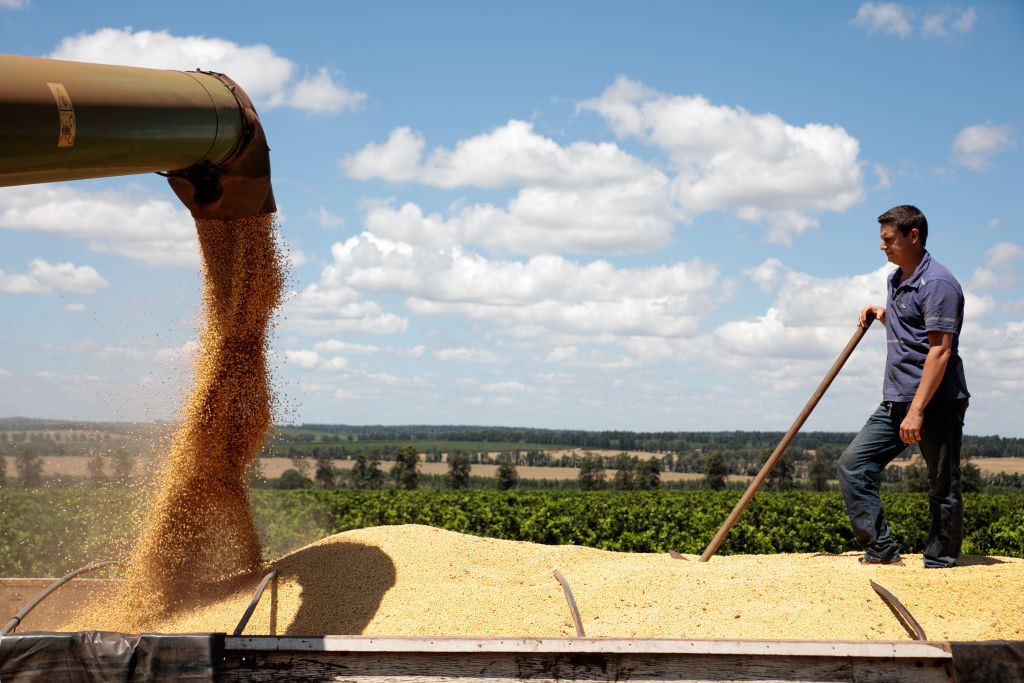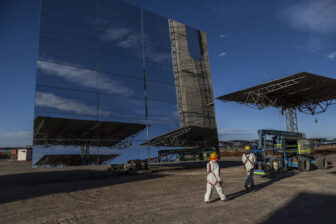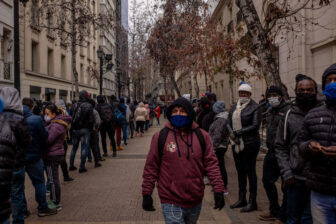SÃO PAULO – Where goes commodity prices, so goes Latin America? In the Cambridge University’s Economic History of Latin America since Independence, we read the following:
“The volatile nature of commodity prices in the 1970s left both private sector and the public sector unable to distinguish between temporary and permanent improvements in the external environment.“
The quote above from Victor Bulmer-Thomas refers to events in the 1970s which seem to repeat events in the 1920s for the region, but we can argue that pretty much the same thing happened in the last “commodity super cycle” that had as its principal cause the entry of China in the World Trade Organization (WTO) in 2002.
“Resource shifts into primary-product sector, which could not easily be reversed, were implemented on the basis of short-run price changes – as echo of the 1920s policy in many republics. When commodity prices started to fall and terms of trade deteriorated, too many republics were left dangerously exposed.”
With headlines showing prices soaring, it begs the question: is this the start of a new commodity “super-cycle”? As with anything in financial markets, opinions vary. The optimistic case is based on the thesis that the 12-year fall in commodity prices has led to a period of underinvestment in the sector leading to supply-side constraints. Thus, if the global economy grows strongly – the current consensus for at least 2021 – rising demand with limited supply elasticity will lead prices much higher. The opposite view states that our high-tech economy is progressively becoming less commodity-intensive, which will curtail commodities demand even if global growth booms.
I would say that both points are right, and where commodity prices will go will depend on the relative strength of these opposing forces. Nonetheless, the fact that commodity prices hit a multi-decade low is noteworthy given the strong cycles seen historically. Thus, it does not seem to be an overly optimistic assumption that commodity prices should be higher in the new decade that has just begun.
Will this help the region? Undoubtedly. But we would argue that the positive effects are likely to be much less intense than during the last “super cycle.”
The reason for this is that the region has not “cleaned up house” from the hangover from the last commodity cycle, expressed in the rising debt burdens which have now been made much worse by the 2020 pandemic.
Unfortunately for Latin America, the last cycle was cut short by the Global Financial Crisis (GFC). But what happened during that “golden decade” of the 2000s can succinctly be described (with the risk of oversimplification, as always with historical comparison) as a repeat of the patterns seen in the 1920s and 1970s.
Let’s look at a few examples. Take Brazil, the region’s largest economy. Average yearly growth over a five year-span up to 2011 was close to 5%. That was because the drop in growth during the 2008 GFC was more than compensated by the huge bounce back in 2010 when Brazil grew as astounding 7.5%. 2010 also happens to be when the Brazilian terms of trade peaked, starting a six-year decline whose low coincided with the impeachment of Dilma Rousseff in 2016. At the close of 2019 – before the pandemic – Brazil’s five-year average growth was in negative territory.
We can tell similar stories for other countries in the region, with a similar “rise and fall story-arc” as seen with the Workers’ Party in Brazil, whether we look at the Kirchners in Argentina, the Chávez-Maduro regime in Venezuela, and so on. Every story is different, but all share a common element of higher commodity prices->higher growth->higher government spending and subsequent political success, followed by the exact opposite once commodity prices fell.
Today the region is still grappling with tragic social and economic consequences of the global pandemic, but from this very important dimension there seems to be a light at the end of the tunnel: from their April lows, commodity prices – like many financial prices – have seen a massive recovery. Looking, for example, at the CRB commodity index, prices are up 75%.
We should also note that the levels seen in April 2020 are the lowest in over 30 years, and that current commodity prices still are over 60% below the peak seen in 2008.

Source: Bloomberg
The IMF forecasts that the region’s overall debt burden will reach 86.3% of GDP in 2021 from 64.6% in 2017. While the current consensus is that countries like the United States should provide ample fiscal support to their economies and not undertake “premature” austerity measures, dealing with rising debt levels after the consolidation of strong economic recoveries, Latin America does not have the privilege of issuing reserve-like currencies or have the ability to implement years-long “quantitative easing” programs.
This is not an argument for fiscal tightening for a region still in the midst of the pandemic, but a warning that the effects of the region’s growing indebtedness – mostly built up during the last decade’s period of disappointing growth and now made much worse during the pandemic – will likely create a drag on growth even if we see higher commodity prices in the years ahead.
That said, higher commodity prices will help, both in boosting economic growth and, as seen in previous “up cycles”, easing financial conditions, making the financing of existing debt burdens much easier. Thus, while we would not expect a return of the glory days of the 2000s (or the 1970s and 1920s), this new decade should be much better than the bad decade that has just ended.
—
Volpon is chief investment strategist for WHG








